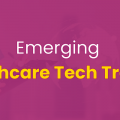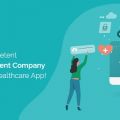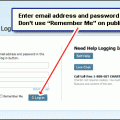Top Healthcare APIs to Watch out for in 2022
The healthcare sector is gradually evolving to embrace a novel approach. Paper-based records are being digitalized utilizing advanced software data structures. Medical entities are using healthcare applications and systems to collect, process, and digitally store healthcare information. Healthcare API’s are being utilized in a big way in the healthcare industry to integrate information from different devices and systems. Let’s look at some contributions of healthcare APIs (Application Programming Interfaces) in the healthcare industry.
A healthcare API establishes a connection between various medical apps and systems for creating interoperability. These APIs are primarily proxy layers that are placed on healthcare apps, systems, and databases; they allow the stakeholders of the organization to access or repurpose these apps and databases. APIs enable greater interoperability between healthcare systems and drive the management of the entire healthcare digital environment. Some of the top contributions of Healthcare APIs are booking online appointments, integrating EHRs & wearables, monitoring patients remotely, and executing payments.
Let’s gain handy insights on healthcare APIs and explore the most noteworthy APIs that every healthcare service provider must be well versed in 2022!
What is a Healthcare API and how does it work?
A healthcare API refers to a digital structure that connects an app with the information stored on a server. Healthcare APIs allow an app to gather and access medical data from a digital database. APIs can also serve the purpose of storing healthcare records and sharing this information with other stakeholders whenever needed. When an app requires to access medical data, a GET request is sent to the connected API. The information is thereafter transmitted to the application in XML or JSON format. Medical apps consume this data in a specific format, as they are programmed to accept the data in the desired way.
Top Healthcare APIs to consider in 2022
ApiMedic Symptom Checker
This is a modular healthcare API that provides symptom checker features for the main program. Healthcare app developers use this API to integrate features that allow users to check disease symptoms. The symptom checker functionality helps users to identify diseases they are possibly suffering from. It also provides patients with additional healthcare information related to diseases and directs them to the most relevant doctor as per the disease identified. This API comes with a testing environment and different pricing options.
CONTUS MirrorFly API
This healthcare API brings about effectiveness, flexibility, and transparency in the processes of interacting with patients and sharing medical data. It offers outstanding doctor-patient communication in real-time at any hour. Practitioners using this API can share prescriptions and diagnostic images via digital channels for providing more personalized treatment to patients.
It offers loads of live streaming abilities, chat options, the group calling feature, and numerous end-to-end custom voice/video calling functionalities for customers. Utilizing the group calling feature, doctors can create online counseling sessions for a huge group of audiences. This API is flexible enough to integrate with any third-party device like Android, iOS, or web applications facilitating the creation of ideal telehealth platforms.
Particle Health API
This API enables over 250 million US consumers to access patient records from most EHR systems across the country via a single point of entry. The API is pre-integrated with a major chunk of the labs and pharmacies in the US. The API complies with HIPAA, C-CDA, and FHIR standards. One unique benefit of this API is its capability to screen patients for detecting co-morbidities related to the Covid19 virus.
ChironHealth API
This telemedicine API can effortlessly integrate into a third-party application for providing services like online appointment scheduling, management of healthcare devices, and insurance reimbursement. And, the best part is that these services can be executed via instant messaging. Also, reimbursement codes can be added to the videos, thereby simplifying the complexity of the billing process in telemedicine apps.
Allscripts API
With this API, healthcare app developers can integrate as well as create EHR (Electronic Health Record) software based on Allscripts. Such software enables seamless data exchange between EHR software systems and third-party apps. This allows a medical provider to share medical information with another provider or stakeholder accurately and speedily.
At present, this API functions with 14 USCDI classes and allows developers to test integrations, using the compatible sandbox environment. However, this API can only be used by developers who are registered with Allscripts. Healthcare providers that wish to use Allscripts products need to register for ADP (Allscripts Developer Program).
Eligible API
This is a real-time healthcare API that simplifies processes like healthcare payment and insurance billing for the consumers as well as providers unanimously. Eligible API provides an in-depth report on 1000+ insurance firms and also streamlines insurance verifications and claims processing tasks. Here, the standard eligibility transaction, X12 EDI 270 is used, it’s then formatted in JSON for initiating an HTTP request. This way, the EDI transaction set becomes all the more accessible to developers and the apps used by consumers. The X12 standards are well managed behind the scenes to provide users access to features like medical subscriptions, coinsurances, dependent plan memberships, etc. in a format that is human-readable.
Human API
This AWS-empowered healthcare API is a real-time digital healthcare data network that allows medical providers to deliver quality services to their patients. It assists in establishing a connection between patient portals, hospitals, EMRs, clinics, pharmacies, imaging laboratories, and insurance companies across the US. Using this API, millions of users can sync their healthcare data like medical history, lab test results, e-prescriptions, wearable devices, etc. into one single secure platform. Authorized users such as practitioners, healthcare professionals, etc. can access these records for treatment-related tasks. Every piece of healthcare information whether it is in transit or at rest is encrypted. Moreover, the data can be shared by customers irrespective of the data source and the data collection process. Furthermore, users can fully control access to their health data and decide which medical entities will be able to view their data.
The API gathers medical data from multiple sources and then, converts it into a format that is compatible with Fast Healthcare Interoperability Resources (FHIR). This process is executed using AI algorithms and medical API vendors. You can feed diverse types of medical data of a single patient into this API. It supports numerous data elements such as demographics, genetic characteristics, health conditions, allergies, medication, immunization records, medical insurance claims, meal plans, test outcomes, sleep patterns, social history, health vitals, activities, and medical provider information. Human API also offers free medical APIs for conducting testing activities.
Google Cloud Healthcare API
This API offers an enterprise-grade healthcare app development environment that is well-managed and scalable as it enjoys the support of popular medical data standards like DICOM, HL7, HL7V2, and FHIR. It’s ideal for securely developing clinical apps and analytics solutions on Google Cloud. For example, healthcare data is imported from different sources including wearable devices and EHRs, and transformed into the FHIR format. And, data files are stored, managed, and analyzed by converting the data into the DICOM (Digital Imaging and Communication in Medicine) format.
Google Cloud Healthcare API simplifies the data exchange process happening between Cloud-based medical apps & solutions. It offers a RESTful interface for delivering medical data and intelligent insights. It also provides a host of analytical tools like vCloud, BigQuery, DataLab, AutoML, Datalow, Vertex AI, Cloud ML Engine, and Tableau. These tools confer machine learning abilities to the API and allow far-sighted visualization of medical data. For instance, Vertex AI provides ML capabilities, Dataflow offers pre-built connectors for processing streaming data, and BigQuery promotes scalable analytics. Using the Google Cloud Healthcare API, one can integrate devices, locations, datasets, policies, etc. in real-time.
This API not only ensures the security of your medical data but also fulfills the specific requirements of the healthcare sector like adherence to regulatory compliances. Google Cloud Healthcare API is backed by the privacy and security standards of Google, is HITRUST CSF certified, and supports HIPAA compliance.
Amazon Comprehend Medical API
This is a HIPAA compliant healthcare API that extracts data from different sources like trial reports, EHRs, practitioners’ notes, lab test results, etc. ML algorithms and NLP (natural language processing) technology are employed to automatically draw terms describing patients’ medical condition, parts of the body, treatment methodologies, medication plans, etc. These drawings are linked to unique codes obtained from RxNorm and ICD-10-CM datasets. This API identifies phrases related to PHI like names, IDs, age, contact numbers, and addresses of patients.
Two distinct sets of APIs are used for connecting healthcare entities with standardized names – Ontology Linking APIs and Text Analysis APIs. Healthcare documents must be added to the Amazon S3 storage for availing of the services of this API. This service is a paid one and users are charged as per the amount of usage.
Microsoft Azure API for FHIR
Microsoft Azure API ensures the privacy of patients’ medical data. Healthcare systems use this API to consolidate their legacy documents stored in different repositories into Cloud storage. The API takes the help of medical API vendors to store PHI securely, adhering to FHIR standards. This API comes with a unique IoT connecter that ingests biometric data from different healthcare devices, EHR systems, and other data sources like research databases. The IoT connecter also processes biometric signals, converts the biometric data into FHIR, analyzes the data, and creates IoMT systems.
Healthcare organizations using Azure cloud services can create rich datasets and reap the benefits of implementing software tools related to business intelligence. The API comes with a power BI FHIR connecter that links the BI platform and the FHIR API for visualizing data and intelligent analytics. This healthcare API adheres to most standard compliances including HIPAA.
The top use cases of Microsoft Azure API include scalable EHR systems, dashboards for patient reporting, remote monitoring systems for patients, clinical decision-making processes, and healthcare analytics.
Closing Views:
Healthcare providers, particularly start-ups, are still reluctant to employ APIs owing to some limitations existing in this arena. Several APIs provide a uni-directional data flow resulting in read-only access for patients. The complexity of API implementation and vulnerability to cybersecurity threats are other bottlenecks that keep medical organizations from adopting APIs.
The aforesaid challenges can be resolved if you partner with an experienced healthcare application development company to build user-friendly and customized healthcare solutions for your company. A proficient app development service will know the correct use of APIs based on your specific project requirements and guide you through the right path.
Other articles and publications:
Articles and publications of other companies:
 Pixel Values Technolabs: Your Trusted Partner for The Best Codeigniter Development Services In India
Pixel Values Technolabs: Your Trusted Partner for The Best Codeigniter Development Services In India
- +1 (469) 277-0804
- 8305 Tripoli Trl, Frisco, TX 75034, United States
- www.biz4solutions.com/













